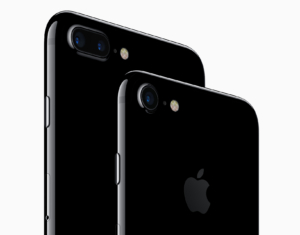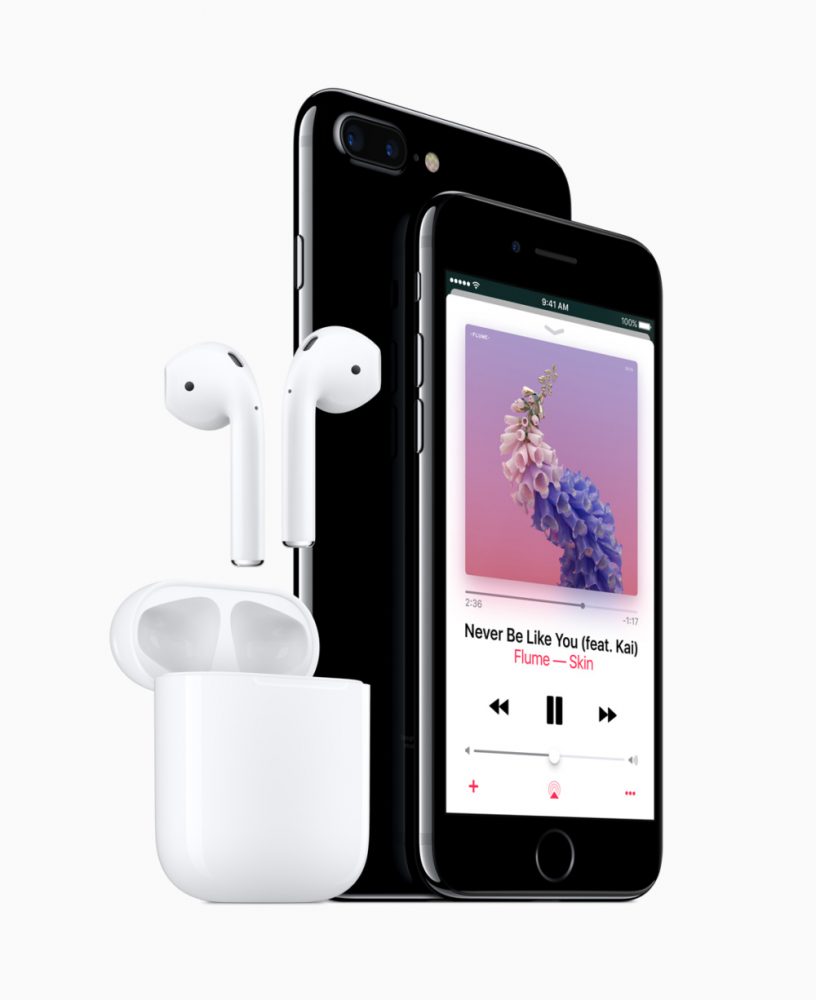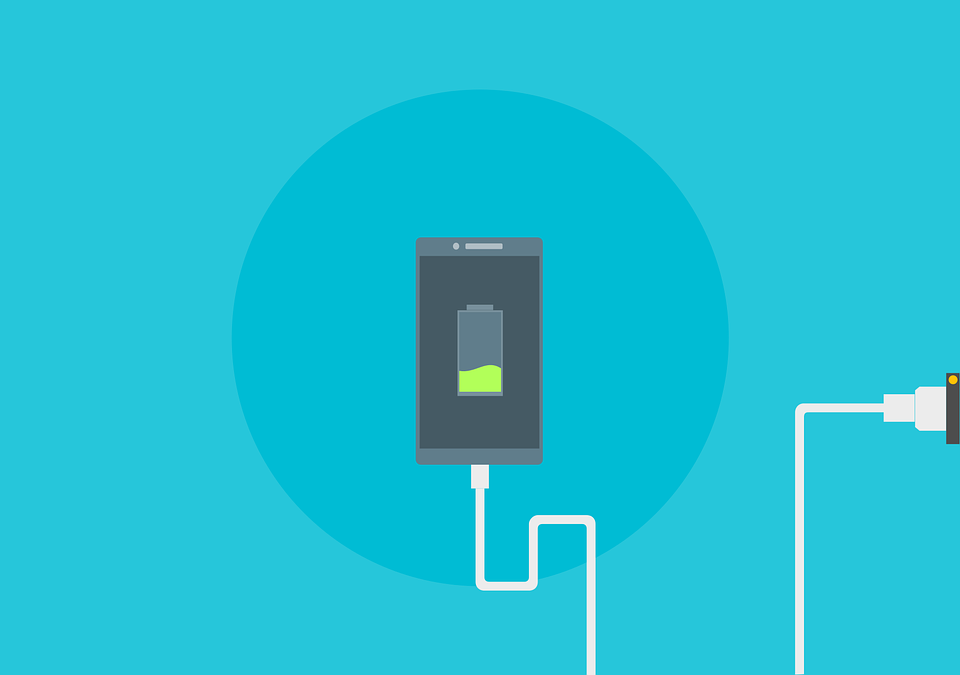[ot-caption title=”New iPhones with Apple’s wireless AirPods headphones. (via Apple Newsroom)”]
On September 7th, Apple held another of it’s annual large device unveilings. However, something was noticeably different about the reaction from fans of this Cupertino company. While many iPhone 6 owners were theoretically on track to get Apple’s new iPhone 7, many voiced their opinion that the latest gadget had added nothing that merited what can amount to a $1000 phone upgrade. Even with this abundance of negative sentiment toward the iPhone 7 (regular and Plus models), Apple has shipping dates backed up as far as over a month. What is the origin of this dissonance in seeming consumer reaction and actual purchases? [spacer height=”10px” id=”2″]
People have long been critical of the slowing pace of the smartphone market, and this reality has been increasing in recent years, as each annual upgrade appears to add less and less value while maintaining the same high sticker price. One important aspect to note is the lack of significant design change that has become a staple of each number change iteration in the iPhone. That is to say that since the iPhone 3G (the second generation iPhone), each subsequent number change (4,5,6…) has had an associated change in design. The absence of such an alteration has resulted in many people stating that they will hold off for the next generation of the iPhone, which is rumored to bring about several substantial differences in concordance with the 10th anniversary of the iPhone. [spacer height=”5px” id=”3″]

This year’s offerings, the iPhone 7 and 7 Plus, do still have some notable amendments from their previous generation counterparts. Most strikingly, Apple changed the camera modules on both devices. The smaller 4.7″ screened iPhone 7 has a new 12 megapixel camera with a 6-element lens on optical image stabilization. The larger iPhone 7 Plus has a 5.5″ screen with a two lens system. The aforementioned two lens system includes the 12 megapixel lens of the iPhone 7 in combination with a telephoto lens that gives an advantage to the Plus through a 2x optical zoom that has no distortion in camera quality. [spacer height=”10px” id=”2″]
On top of these lens updates, the screens on both phones are said to be brighter and more vibrant than the previous iteration. The concept of water resistance, along with the well anticipated loss of the 3.5mm headphone jack which was replaced with a stereo speaker system, received much attention following the announcement. The new A10 chip inside these phones boosts graphics performance by 3 times while increasing battery life by one hour as compared to the iPhone 6 and 6 Plus. This boost in battery power can be attributed to new low power, high efficiency cores in the chipset. Finally, two new colors, Black and Jet Black, replace the Space Gray of previous models. Black being a darker, matte metal finish and Jet Black being the piano style, glossy backing akin to the iPhone 3G and 3GS. [spacer height=”10px” id=”2″]
Ultimately, it is not difficult to see where discontent arises within the community, as smartphones have begun to progress in a more gradual evolution rather than the annual revolution that the market has become accustomed to witnessing. With this said, advances in the camera and speakers are notable, and the loss of the headphone jack can be seen as a pressure to move the industry toward better bluetooth headphones. Apple will likely continue to see an inordinate number of purchases, and if the rumors are to be believed, the next iPhone should be incredible. If you are content with your current phone, it seems best to wait it out until those more compelling devices are for sale. [spacer height=”20px”]
Sources: Apple, MacRumors [spacer height=”5px” id=”3″]
Photo Source: Apple Newsroom [spacer height=”5px” id=”3″]
































![Stranger Things 4: What to Expect [Warning: Contains Spoilers]](https://pcpawprint.com/wp-content/uploads/2021/11/StrangerThings4-900x473.jpeg)





































































